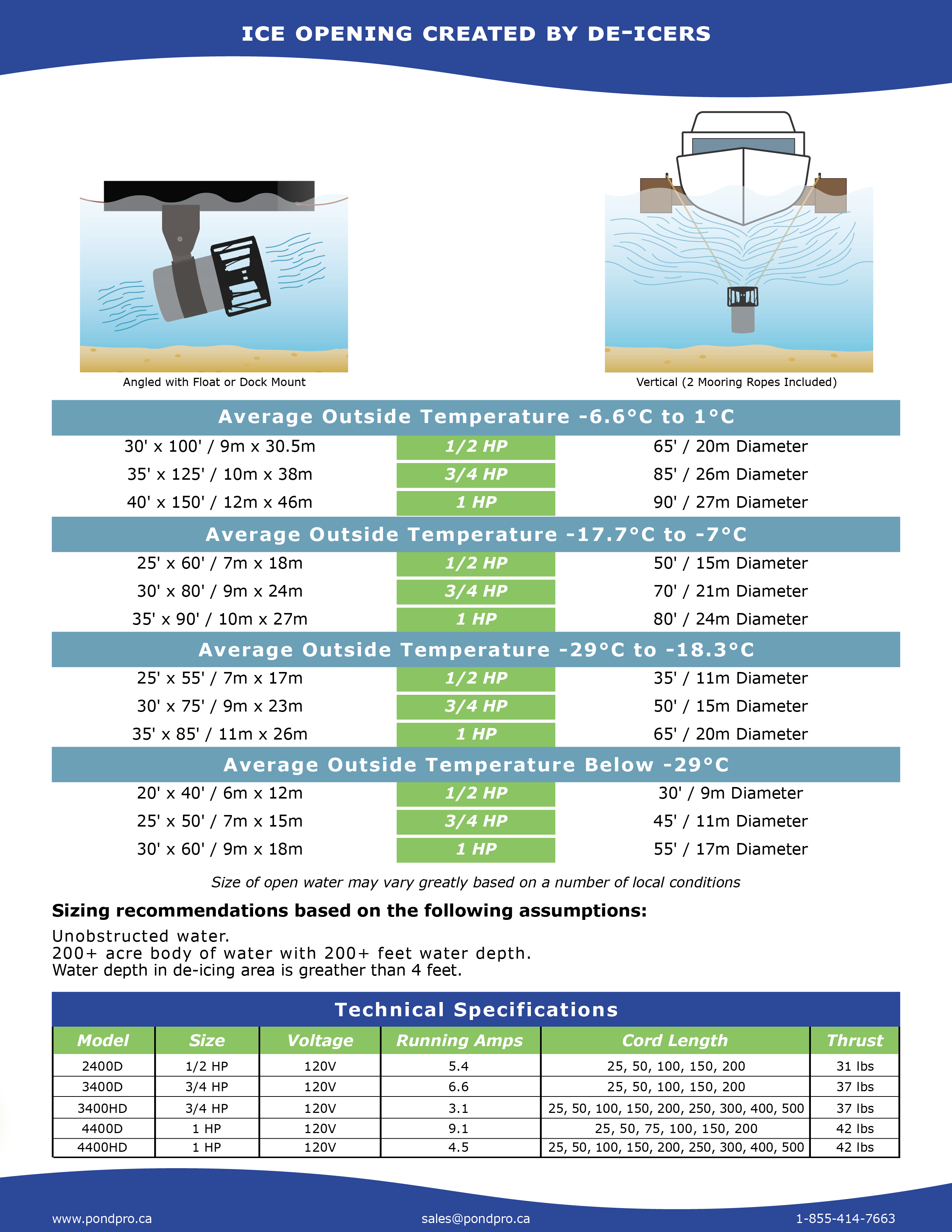Common Fall and Winter Pond and Lake Care Questions
Common Fall and Winter Questions
As the season changes, many pond owners start to notice the shifts in water quality, fish behaviour, and overall pond health. Cooler temperatures, falling leaves, and changes in biological activity can all affect how your pond functions. Preparing your pond for winter is essential to protect aquatic life, maintain water clarity, and ensure a smooth transition into spring. Below are answers to some of the most frequently asked questions about fall and winter pond care.
Should I Continue to Use Beneficial Bacteria Throughout the Winter?
It depends! For most bacteria, we recommend stopping treatment once the water temperature drops below 8°C. This ensures the bacteria's efficiency and productivity without wasting product.
Depending on your regional location, you may be able to treat year-round; however, the reality for most Canadians is that we need to stop treating in mid-to-late fall.
Our NaturalClear and Muck Pellets are designed to maintain clear, healthy water and contain resilient species of bacteria that perform well in Canada’s variable climate.
Formulated with cold-tolerant species that remain active in water temperatures as low as 3°C. That said, bacterial activity depends on temperature. As temperatures drop, their metabolic activity slows. For peak efficiency, we recommend treating as long as water temperatures remain at or above 8°C.
Be sure to monitor your water temperatures regularly. Once it falls below the recommended minimum, pause treatment and resume when the temperature rises back above that threshold. This ensures the bacteria remain active and effective without wasting product.
Can/Should I Continue to Run My Aeration System Throughout the Winter?
Yes, and it is often a good idea!
During the fall, ponds accumulate organic debris, including leaves, twigs, and decaying vegetation. If this material remains trapped under ice through the winter, it can decompose anaerobically, producing harmful gases that are harmful to fish and other aquatic life. When the pond surface freezes completely, these gases can’t escape, and oxygen levels drop.
Aeration during the winter is an effective way to prevent this problem. Aerated ponds generally remain ice-free longer, and the ice is typically thinner where the diffusers are located. By keeping an area open longer, gases don't become trapped, and when ice does form, the constant circulation and oxygenation prevent the anaerobic decomposition and subsequent harmful gas production.
To ensure your aeration system runs efficiently all winter long, it’s essential to use an insulated airline (1-way and 4-way available). This specialized tubing prevents freezing, resists damage from UV exposure, and is chew-proof, making it durable and reliable even in harsh conditions.
Our Can-Air Koi, ECO, SS, and Mega Diffused Aeration Systems offer a wide range of diffuser sizes to suit ponds or lakes of any size. Not sure which system is right for you? Reach out to our team at sales@pondpro.ca or complete our Aeration Form. We’re happy to help!
How Do I Keep Larger Areas Free of Ice?
As winter approaches, we often hear from customers looking for effective ways to keep their boats, docks, and other areas ice-free. For these applications, we recommend the Kasco Marine De-Icers, available in ½ HP, ¾ HP, and 1 HP. These are available in both 120 V and 240 V configurations.
Built for energy efficiency, durability, and dependable performance in harsh Canadian climates, the Kasco Marine De-Icer provides effective ice control and peace of mind throughout the entire season.
See below the de-icer sizing chart to help you determine the best size for your needs and applications.

Do I Feed My Outdoor Fish in the Winter?
We highly recommend our nutrient-filled Pond Pro Premium Floating Koi Food (available in 3mm and 5mm pellets) and Pond Pro Trout Food (available in 3mm and 5mm pellets) for feeding your fish during the warmer months. However, if they are kept outside year-round, feeding should change as the temperature drops.
Fish metabolism slows dramatically in cold water. Once the temperature falls below 10°C, their ability to digest food declines, and by 4°C, digestion virtually stops. Feeding during this time can cause uneaten food to accumulate at the bottom, potentially degrading water quality.
We recommend reducing feeding below 10°C and stopping entirely below 4°C. When in doubt, observe your fish; if they are sluggish and not coming to the surface, it is best to let them rest until spring.
Preparation Goes a Long Way
As fall transitions to winter, a little preparation goes a long way in maintaining your pond's health and balance. By adjusting bacteria treatments, maintaining aeration, and modifying fish care routines, you can help your pond ecosystem thrive even through the coldest months. Taking the time now ensures clearer water, healthier fish, and a smoother start when spring returns.
If you have any questions about winter pond care or need help selecting products tailored to your setup, our team is always happy to assist. Contact us at sales@pondpro.ca or explore our full range of seasonal pond solutions online. We’re here to help your pond look its best year-round.
Turn Tips into Action – Shop this Blog Post!
Recent Posts
-
Winter Water Chemistry: What Happens Under the Ice
Winter Water Chemistry: What Happens Under the Ice When winter sets in and the pond freezes over, th …18th Dec 2025 -
Top Gift Ideas for Pond Owners: Practical, Fun & Perfect for Any Season
With the holiday season quickly approaching, it’s the perfect time to start thinking about meaningfu …4th Dec 2025 -
De-Icing System Sizing Guide: How to Pick the Right System for Your Pond or Dock
Learn how to size, install, and position a pond or dock de-icer for cold climates. Protect your fish …28th Nov 2025




